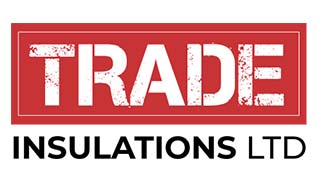Underfloor heating is a popular way to warm up a room, as it provides even heat distribution and can save space compared to traditional radiators. There are several products available for underfloor heating, each with their own advantages and disadvantages.
It provides warmth from below, radiating up into the room to heat the space evenly, and reducing the need for radiators or other heating sources. It can be installed in new construction or retrofitted into existing buildings, and is typically more energy efficient and cost-effective than traditional heating systems. Underfloor heating can be used with various flooring materials, such as tile, carpet, wood, and concrete.

Different Underfloor Heating Methods
- Electric Underfloor Heating: Electric underfloor heating systems use electric cables or mats that are laid directly under the flooring. These systems are easy to install and can be used with a variety of flooring materials, including tile, wood, and carpet. Electric underfloor heating is also energy efficient and can be controlled using a thermostat.
- Hydronic Underfloor Heating: Hydronic underfloor heating systems use hot water to heat the floor. These systems are more complex to install than electric systems, but they are also more energy efficient and can be used with a wider range of flooring materials. Hydronic underfloor heating can also be integrated with a central heating system.
- Insulation: Insulation is an important aspect of underfloor heating, as it helps to keep the heat in the room and reduce energy costs. There are several types of insulation available, including foam boards, reflective insulation, and insulated subfloor panels.
- Thermostat: A thermostat is a device that controls the temperature of an underfloor heating system. There are several types of thermostats available, including manual thermostats, programmable thermostats, and smart thermostats. Smart thermostats can be controlled using a smartphone or tablet, and can also be integrated with other smart home devices.
- Flooring: The type of flooring used with underfloor heating can also have an impact on the effectiveness of the system. Some types of flooring, such as tile and stone, are better conductors of heat than others, such as carpet. Choosing the right type of flooring for your underfloor heating system can help to maximise the heat output and ensure that the room is warm and comfortable.
There are many products to choose from when it comes to underfloor heating, each with its own set of advantages and disadvantages. It is important to consider the type of heating system, insulation, thermostat and flooring that best suit your needs and budget. With proper research and installation, underfloor heating can provide a comfortable and energy-efficient heating solution for your home.
Important things to consider
Another important consideration when choosing products for underfloor heating is the type of subfloor you have in your home. If you have a concrete subfloor, you will need to use a different type of system than if you have a wooden subfloor. Electric underfloor heating systems are typically more suitable for concrete subfloors, while hydronic systems are better suited for wooden subfloors.
Additionally, it is important to choose a high-quality underfloor heating system and products to ensure that it lasts for many years and performs efficiently. Look for products that come with a warranty and have been tested and certified by reputable organisations. It is also a good idea to choose products from a reputable manufacturer that has a proven track record of producing quality underfloor heating systems.
Insulation is an important aspect of underfloor heating, as it helps to keep the heat in the room and reduce energy costs. There are several types of insulation available, including foam boards, reflective insulation, and insulated subfloor panels.
Thermostat is a device that controls the temperature of an underfloor heating system. There are several types of thermostats available, including manual thermostats, programmable thermostats, and smart thermostats. Smart thermostats can be controlled using a smartphone or tablet, and can also be integrated with other smart home devices.
Concluding Underfloor Heating
The type of flooring used with underfloor heating can also have an impact on the effectiveness of the system. Some types of flooring, such as tile and stone, are better conductors of heat than others, such as carpet. Choosing the right type of flooring for your underfloor heating system can help to maximise the heat output and ensure that the room is warm and comfortable.
It is important to have a professional install your underfloor heating system. Not only will this ensure that the system is installed correctly, but it will also ensure that it meets all safety and building codes. A professional will also be able to provide you with advice and guidance on how to use and maintain your underfloor heating system, ensuring that it lasts for many years and provides you with optimal comfort.
Overall, underfloor heating can be a great way to heat your home, but it’s important to choose the right products to ensure that it works efficiently and effectively. By considering the type of subfloor, quality of products, warranty, and professional installation, you can ensure that your underfloor heating system will provide you with the warmth and comfort you need.
Looking to order loft insulation? Ordering insulation online can be an easier and quicker process. Meaning your items get delivered straight to your door without having to pick any items up from store or fit them into your vehicle. Our easy to use website means you can place an order in minutes. Get our best price on insulation when you shop online at Trade Insulations.

